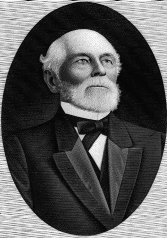|
Angela N. H. Creager
Angela N. H. Creager (born 1963) is an American biochemist, historian of science, and the Thomas M. Siebel Professor in the History of Science at Princeton University, where she is also the director of the Shelby Collum Davis Center for Historical Studies. Prior to the Siebel chair's creation in 2015, she was the Philip and Beulah Rollins Professor of History. She served as president of the History of Science Society (HSS) from 2014 to 2015. She focuses on the history of biomedical research in the 20th century. In 2020 she was elected to the American Philosophical Society. Early life and education Professor Creager completed a double major in biochemistry and English at Rice University in 1985. She earned her Ph.D. in biochemistry from the University of California, Berkeley in 1991. She went on to do postdoctoral work at Harvard University and Massachusetts Institute of Technology (MIT) where she focused on the history of science. Career Creager joined the history depar ... [...More Info...] [...Related Items...] OR: [Wikipedia] [Google] [Baidu] |
Rice University
William Marsh Rice University (Rice University) is a private research university in Houston, Texas. It is on a 300-acre campus near the Houston Museum District and adjacent to the Texas Medical Center. Rice is ranked among the top universities in the United States. Opened in 1912 as the Rice Institute after the murder of its namesake William Marsh Rice, Rice is a research university with an undergraduate focus. Its emphasis on undergraduate education is demonstrated by its 6:1 student-faculty ratio. The university has a very high level of research activity, with $156 million in sponsored research funding in 2019. Rice is noted for its applied science programs in the fields of artificial heart research, structural chemical analysis, signal processing, space science, and nanotechnology. Rice has been a member of the Association of American Universities since 1985 and is classified among "R1: Doctoral Universities – Very high research activity". The university is orga ... [...More Info...] [...Related Items...] OR: [Wikipedia] [Google] [Baidu] |
Sulfur-35
Sulfur (16S) has 23 known isotopes with mass numbers ranging from 27 to 49, four of which are stable: 32S (95.02%), 33S (0.75%), 34S (4.21%), and 36S (0.02%). The preponderance of sulfur-32 is explained by its production from carbon-12 plus successive fusion capture of five helium-4 nuclei, in the so-called alpha process of exploding type II supernovas (see silicon burning). Other than 35S, the radioactive isotopes of sulfur are all comparatively short-lived. 35S is formed from cosmic ray spallation of 40 Ar in the atmosphere. It has a half-life of 87 days. The next longest-lived radioisotope is sulfur-38, with a half-life of 170 minutes. The shortest-lived is 49S, with a half-life shorter than 200 nanoseconds. Heavier radioactive isotopes of sulfur decay to chlorine. When sulfide minerals are precipitated, isotopic equilibration among solids and liquid may cause small differences in the δ34S values of co-genetic minerals. The differences between minerals can be used to estimate ... [...More Info...] [...Related Items...] OR: [Wikipedia] [Google] [Baidu] |
Massachusetts Institute Of Technology Alumni
Massachusetts (Massachusett language, Massachusett: ''Muhsachuweesut [Massachusett writing systems, məhswatʃəwiːsət],'' English: , ), officially the Commonwealth of Massachusetts, is the most populous U.S. state, state in the New England region of the Northeastern United States. It borders on the Atlantic Ocean and Gulf of Maine to the east, Connecticut and Rhode Island to the south, New Hampshire and Vermont to the north, and New York (state), New York to the west. The state's capital and List of municipalities in Massachusetts, most populous city, as well as its cultural and financial center, is Boston. Massachusetts is also home to the urban area, urban core of Greater Boston, the largest metropolitan area in New England and a region profoundly influential upon American History of the United States, history, academia, and the Economy of the United States, research economy. Originally dependent on agriculture, fishing, and trade. Massachusetts was transformed into a manuf ... [...More Info...] [...Related Items...] OR: [Wikipedia] [Google] [Baidu] |
Harvard University Alumni
The list of Harvard University people includes notable graduates, professors, and administrators affiliated with Harvard University. For a list of notable non-graduates of Harvard, see notable non-graduate alumni of Harvard. For a list of Harvard's presidents, see President of Harvard University. Eight Presidents of the United States have graduated from Harvard University: John Adams, John Quincy Adams, Rutherford B. Hayes, John F. Kennedy, Franklin Delano Roosevelt, Theodore Roosevelt, George W. Bush, and Barack Obama. Bush graduated from Harvard Business School, Hayes and Obama from Harvard Law School, and the others from Harvard College. Over 150 Nobel Prize winners have been associated with the university as alumni, researchers or faculty. Nobel laureates Pulitzer Prize winners ... [...More Info...] [...Related Items...] OR: [Wikipedia] [Google] [Baidu] |
University Of California, Berkeley Alumni
A university () is an institution of higher (or tertiary) education and research which awards academic degrees in several academic disciplines. ''University'' is derived from the Latin phrase ''universitas magistrorum et scholarium'', which roughly means "community of teachers and scholars". Universities typically offer both undergraduate and postgraduate programs. The first universities in Europe were established by Catholic Church monks. The University of Bologna (), Italy, which was founded in 1088, is the first university in the sense of: *being a high degree-awarding institute. *using the word ''universitas'' (which was coined at its foundation). *having independence from the ecclesiastic schools and issuing secular as well as non-secular degrees (with teaching conducted by both clergy and non-clergy): grammar, rhetoric, logic, theology, canon law, notarial law.Hunt Janin: "The university in medieval life, 1179–1499", McFarland, 2008, , p. 55f.de Ridder-Symoens, Hild ... [...More Info...] [...Related Items...] OR: [Wikipedia] [Google] [Baidu] |

